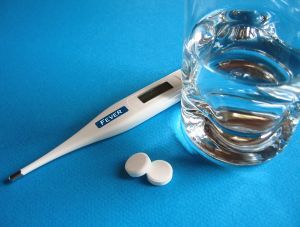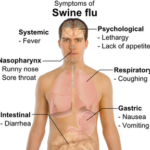A scratchy sore throat is often the first symptom of the onset of a cold. It’s often one of the first reasons for a trip to the doctor’s office during cold and flu seasons. If the sore throat is from the onset of a cold virus, then it should only last a few days. Over the counter medicines will help with the symptoms of a viral sore throat and a trip to the doctor’s office is usually not necessary.
A sore throat caused from bacteria is a different matter. The streptococcus bacteria is what causes the illness commonly called strep throat. This bacterial infection is highly contagious. Strep throat can be spread through the air from coughs and sneezes. The bacteria can also be picked up from hard surfaces and then transferred to the mouth or nose.
The first symptom of strep bacteria is a very sore throat with painful swallowing. The tonsils and throat are also usually red and appear inflamed. There is sometimes white blotches or pus on the throat or tonsils as well. The illness usually always involves a high fever, swollen lymph glands in the neck and a headache.
Young children are more likely to feel nauseous or vomit. A rash can also accompany the illness from the onset or appear after a few days. The rash is actually Scarlet fever and is a result of the bacteria. The rash is treated with antibiotics just as the strep bacteria.
Children are much more likely to get ill from the strep bacteria than adults. That is not to say adults don’t catch it, and when they do, the rate of complications can be higher for adults. Children between the ages of five and fifteen have the highest occurrence of strep throat.
Since so many of these symptoms can mimic other illnesses, it’s important to be tested. It’s also possible to carry the bacteria in your throat without experiencing any symptoms at all. Tonsils seem to have an important role in how the strep bacteria affect individuals. If the tonsils have been removed, the chance of getting ill from the strep bacteria is greatly reduced.
I had my tonsils removed when I was a child and have taken care of children and adults sick from the strep bacteria without being affected. There is the possibility I carried the bacteria in my throat and contaminated others. This is a fact I wasn’t even aware of until recently.
These bacteria are more prevalent during fall, winter and early spring, much the same as cold and flu viruses due to people spending more time indoors. If your child begins running a high fever (102 – 103 degrees), swollen lymph glands and a sore throat without runny nose or congestion, there is a strong chance it is strep throat.
The doctor’s office can diagnose strep bacteria by a throat culture. This is done by painlessly swabbing the throat, but it can cause gagging. It’s also possible for the initial test in a doctor’s office to be negative for the strep bacteria. Obviously if it’s positive, the antibiotic treatment will begin right away.
If the first test is negative, some doctors will automatically require a second laboratory test just to be certain. This test takes two or three days for the results to be confirmed. If the symptoms are bad enough, the doctor will often begin antibiotic treatment before the results are conclusive.
I know when I experienced it with my grandchild, she readily announced this was the worst sore throat she had ever experienced. That statement along with the swollen glands and high fever led the doctor to believe it was strep throat. As ill as she was from the strep bacteria from the onset, the initial test in the doctor’s office was negative. The second test was positive for the bacteria, so if you believe your child has strep, make sure they perform the second test.
While strep throat is not a serious illness, some of the complications can be. The most serious of these complications is Rheumatic fever. This illness causes inflammatory deposits to form in various places in the body. These deposits can affect the joints, muscles and skin. The most serious complication with Rheumatic fever is the deposits can also be left in the heart and valves. This can cause scarring in the heart and affect the blood flow.
The risk is also there for kidney infection from the strep bacteria. Kidney infection will not always have recognizable symptoms such as a urinary tract infection. Kidney infections can be serious and require hospitalization if not diagnosed early enough. The symptoms include aching in the lower back, fever and eventually a brownish color urine. There is also the risk of ear and sinus infections from the strep bacteria.
Antibiotics will be the treatment for the strep bacteria and it’s important to have the infected person finish taking the medicine. Unfortunately, it’s common to stop taking the antibiotics as soon as we begin feeling better. After taking the antibiotics for a couple of days the symptoms should begin to improve. If the antibiotics are not finished though, the bacteria can linger in the throat and regain strength.
The illness will require bed rest and plenty of fluids. Sometimes warm drinks feel soothing to the throat as well as plenty of cool drinks to prevent dehydration from fever. Avoid drinks with a high acidic content, such as lemonade, orange and grapefruit juices. These are likely to irritate the throat even more. Often using a cool-mist humidifier can help ease the sore throat as well. If the fever is high, non-diary frozen treats are less likely to upset the stomach.
Don’t forget to give your child or adult plenty of yogurt as soon as she or he feels like eating. The yogurt will help counteract the negative affects of antibiotics in the digestive tract, as well as help to prevent yeast infections. Acetaminophen or ibuprofen can ease the sore throat and headache.




